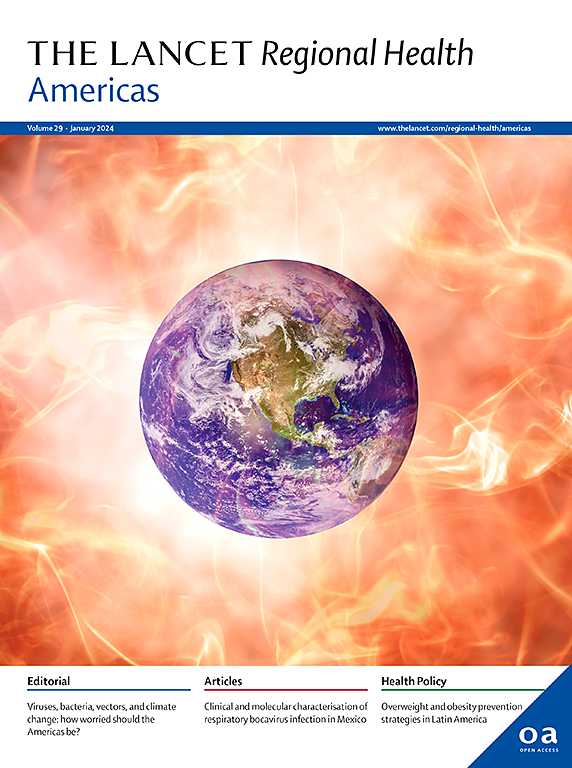Risk factors and survival impact of severe radiation-related late toxicities in head and neck cancer–a cohort study
IF 7
Q1 HEALTH CARE SCIENCES & SERVICES
引用次数: 0
Abstract
Background
Radiation late toxicities (RLTs) are complications of curative-intent radiotherapy (RT) for head and neck cancer (HNC) and are increasingly relevant due to younger age at diagnosis and improved survival outcomes.
Methods
We conducted a cohort study of HNC patients who received ≥50 Gy as part of curative treatment between January 2003 and December 2020 at a Canadian quaternary cancer center. Risk factors for severe RLTs (≥RTOG Grade 3) were evaluated using time-to-event analyses. Actuarial rates of RLT and overall survival (OS) were estimated using competing risk and Kaplan–Meier methods, respectively. Cox proportional hazard models identified factors associated with RLT and OS.
Findings
Among 7622 patients, 12.6% (n = 958) developed RLTs without disease progression, with a 5-year actuarial incidence of 16% (95% CI: 15–16). A survivors subgroup (n = 4650) with ≥2 years of follow-up and no recurrence was also identified. Modifiable risk factors for RLTs included RT technique, dose, neck irradiation, neck dissection, smoking status, and chemotherapy (p ≤ 0.012). Non-modifiable factors included younger age, female sex, and oral cavity primaries (p ≤ 0.012). In multivariable analysis, RLTs were associated with increased mortality (HR = 2.1, 95% CI: 1.8–2.5, p < 0.001), but RLT's impact on OS was lessened among patients referred to the Adult Radiation Late Effects Clinic (ARLEC) (HR = 1.7, 95% CI: 1.3–2.4).
Interpretation
RLTs are common and associated with worse survival among HNC survivors. Identification of modifiable risk factors provides opportunities for prevention. Multidisciplinary management of RLTs in specialized clinics may help improve the outcomes in this growing survivorship population.
Funding
No external funding was utilized for this study.
头颈癌严重放射相关晚期毒性的危险因素和生存影响——一项队列研究
放射晚期毒性(rlt)是头颈癌(HNC)治疗意图放疗(RT)的并发症,由于诊断年龄更小和生存结果的改善,其相关性越来越大。方法:我们对2003年1月至2020年12月期间接受≥50 Gy根治性治疗的HNC患者进行了一项队列研究。使用时间-事件分析评估严重rlt(≥RTOG 3级)的危险因素。分别使用竞争风险法和Kaplan-Meier法估计RLT和总生存率(OS)的精算率。Cox比例风险模型确定了与RLT和OS相关的因素。结果:在7622例患者中,12.6% (n = 958)出现无疾病进展的rlt, 5年精算发生率为16% (95% CI: 15-16)。幸存者亚组(n = 4650)随访≥2年且无复发。可改变的rlt危险因素包括放疗技术、剂量、颈部照射、颈部清扫、吸烟状况和化疗(p≤0.012)。不可改变的因素包括年龄较小、女性和口腔原发(p≤0.012)。在多变量分析中,RLT与死亡率增加相关(HR = 2.1, 95% CI: 1.8-2.5, p < 0.001),但在成人放射晚期效应诊所(ARLEC)就诊的患者中,RLT对OS的影响有所降低(HR = 1.7, 95% CI: 1.3-2.4)。rlt在HNC幸存者中很常见,且与较差的生存率相关。识别可改变的风险因素为预防提供了机会。在专业诊所对rlt进行多学科管理可能有助于改善这一日益增长的生存人群的预后。本研究未使用外部资金。
本文章由计算机程序翻译,如有差异,请以英文原文为准。
求助全文
约1分钟内获得全文
求助全文
来源期刊

Lancet Regional Health-Americas
Multiple-
CiteScore
8.00
自引率
0.00%
发文量
0
期刊介绍:
The Lancet Regional Health – Americas, an open-access journal, contributes to The Lancet's global initiative by focusing on health-care quality and access in the Americas. It aims to advance clinical practice and health policy in the region, promoting better health outcomes. The journal publishes high-quality original research advocating change or shedding light on clinical practice and health policy. It welcomes submissions on various regional health topics, including infectious diseases, non-communicable diseases, child and adolescent health, maternal and reproductive health, emergency care, health policy, and health equity.
 求助内容:
求助内容: 应助结果提醒方式:
应助结果提醒方式:


